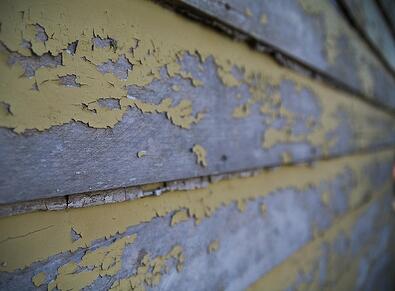Are you looking for the best guide on painting over peeling paint on wood? Peeling paint from a painted surface is a very easy defect to detect. For example, you can clearly see how the applied end product rises in small sectors, and in irregular formats.
These films have a “leaf” appearance, and can be part of the last application, or of previous coats. It is important to keep in mind that this is a problem of poor adhesion between coats. In addition, poor surface preparation may also be the cause of the problem.
Painting over Peeling Paint on Wood
There are many reasons that cause paint to peel from wood. They include:
- Poorly prepared surfaces or paints
- Lack of cleaning and sanding of the previous surface
- Incorrect removal of sanding dust
- Absence or improper use of specific fixatives
- Application of fixatives on wet surfaces
- Low quality finishing products
- Excessive amount of coats of products applied over a long period
You should keep in mind that subsequent coats can cover the wood surface, but any defects will become evident in the immediate future. This is why we commonly see that peeling films carry over earlier ones.
The Solution
In these cases, we must eliminate the previous paintings in bad condition and repair. Let us look at two ways to remove old paintings:
You can choose to do minor works, and eliminate only the most compromised area. However, this is risky since we will not be sure that the same problem will be repeated. That is especially if you choose to apply a new film of paint.
Therefore, we suggest solving the problem from the surface. For the best results, you should remove all the paint until you reach the original surface.
Painting over Peeling Paint on Wood – The Steps
Firstly, make sure you sand the surface. In case of resinous woods, rub it with industrial alcohol or mineral turpentine.
Secondly, apply smooth curing preservative, and a first coat of the transparent product diluted for penetration.
Thirdly, complete with the transparent product chosen for the finish (water or solvent-based Trojan impregnants, varnishes, or lacquers).
For colored finishes, after the preservative, you should use a soft white primer, a water-based multipurpose primer, or an epoxy primer.
Fourthly, finish with water-based or solvent-based multipurpose glazes.
Masonry: Check the surfaces’ insulation, neutrality, and then sand. For each case, you should use the right fixatives.
Then, conclude with the appropriate products.
Iron: On surfaces with oxide, eliminate it and apply smooth phosphatizing deoxidant. Then, apply anti-rust primer, multipurpose primer, or smooth oxide converter. For high performance schemes, after eliminating the oxide, apply indulac epoxy anti-corrosive primer.
Conclusion
Finish with the products chosen for the finish. The use of multipurpose enamels allows you to avoid the application of previous primers.


